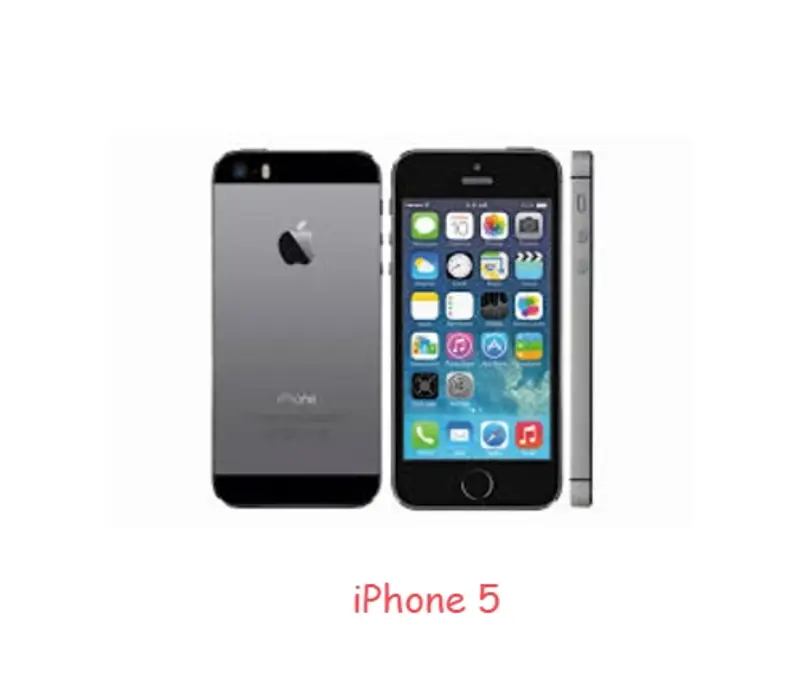iPhone 5 Smartphone Design and Technology

The iPhone 5, released by Apple in 2012, marked a significant turning point in the history of smartphones. It was the first iPhone to feature a larger display, a new lightning connector, and a slimmer design. These changes revolutionized the mobile industry, setting the standard for future devices. In this article, we’ll delve into the key features of the iPhone 5, its technological innovations, and how it compared to its predecessors.
1. Design and Build Quality
One of the most talked-about aspects of the iPhone 5 was its design. Apple shifted from the glass back of the iPhone 4/4S to an aluminum back, which made the phone more durable and lighter. The iPhone 5 weighed just 112 grams, making it 20% lighter than the iPhone 4S.
- Sleeker Dimensions: The phone was also thinner, with a depth of just 7.6mm, making it the slimmest iPhone at the time. The 4-inch Retina display allowed for more screen real estate without compromising on one-handed usability.
- Improved Durability: With a mix of aluminum and glass, the iPhone 5 struck a balance between premium materials and durability. The anodized aluminum frame reduced the risk of cracks, although it was prone to scuffing in some models.
2. Display Innovation
The iPhone 5 featured a 4-inch Retina display with a resolution of 1136 x 640 pixels, offering a higher pixel density for sharper and more vibrant visuals.
- First 16:9 Aspect Ratio: The switch to a 16:9 aspect ratio made it more suitable for watching widescreen videos, and the display’s color saturation was 44% better than previous models, providing richer hues and deeper contrasts.
- Larger but Usable: Despite the increase in size, Apple retained the phone's comfortable one-handed usability. This design philosophy influenced subsequent iPhones, which continued to increase display size without compromising ergonomics.
3. Performance Boost: A6 Chip
Under the hood, the iPhone 5 was powered by Apple’s custom A6 chip, which delivered twice the CPU and graphics performance of the A5 chip found in the iPhone 4S.
- Faster Processing: The A6 chip was designed to be more energy-efficient, extending the battery life despite the more powerful performance. The phone could handle multitasking and gaming with ease, setting a new benchmark for smartphone speed at the time.
- Enhanced Gaming and Apps: With the A6 chip, developers could create more graphically demanding apps and games, which ran smoothly on the device. This was a key advantage that helped solidify the iPhone 5's position as a top choice for power users and gamers alike.
4. Connectivity and New Lightning Port
Apple introduced the Lightning connector with the iPhone 5, replacing the older 30-pin dock connector that had been in use for nearly a decade.
- Faster Data Transfer: The Lightning connector offered faster data transfer and charging capabilities. It was also reversible, making it much more user-friendly compared to the 30-pin connector.
- LTE and Wi-Fi Enhancements: The iPhone 5 was the first iPhone to support LTE connectivity, providing faster internet speeds on mobile networks. It also introduced dual-band Wi-Fi, allowing users to connect to 2.4GHz and 5GHz Wi-Fi networks for improved performance.
5. Camera Improvements
The iPhone 5 maintained the 8-megapixel rear camera of the iPhone 4S but introduced several enhancements.
- Low-Light Performance: Apple improved the camera’s low-light performance, allowing for better quality photos in dimly lit environments. The front-facing camera was upgraded to 1.2 megapixels, making FaceTime calls clearer.
- Panorama Mode: A new Panorama mode was added, allowing users to capture wide-angle shots up to 28 megapixels. This feature became a popular tool for landscape photography.
6. Software: iOS 6
The iPhone 5 launched with iOS 6, which brought several new features and improvements to the iPhone ecosystem.
- Maps and Navigation: Apple Maps debuted with iOS 6, although it faced initial criticism for inaccuracies. Over time, Apple improved the service, and it now competes with Google Maps.
- Passbook and Siri Enhancements: iOS 6 introduced Passbook, an app that stored boarding passes, movie tickets, and other digital documents. Siri, Apple’s virtual assistant, also received several updates, including the ability to launch apps and post to social media.
7. Battery Life
Despite the more powerful processor and LTE connectivity, the iPhone 5 managed to maintain respectable battery life.
- 8 Hours of Talk Time: Apple claimed the iPhone 5 could deliver up to 8 hours of talk time on 3G, 10 hours of video playback, and 225 hours of standby time. These numbers were competitive with other smartphones in the market at the time.
8. Comparison with Previous iPhone Models
The iPhone 5 was a significant upgrade from the iPhone 4S in several ways.
- Larger Display and Faster Processor: The larger display, faster A6 processor, and improved LTE connectivity made the iPhone 5 more future-proof than its predecessors.
- New Features: While the iPhone 4S introduced Siri, the iPhone 5 built upon this foundation with software and hardware improvements that made the device more appealing to both casual and professional users.
9. Reception and Legacy
Upon release, the iPhone 5 was met with widespread critical acclaim. It was praised for its design, performance, and LTE capabilities, though the shift to the new Lightning connector frustrated some users who had invested in accessories with the 30-pin connector.
- Sales and Market Impact: The iPhone 5 sold over 5 million units within the first three days of its launch, breaking previous records. It set the stage for future iPhone models, particularly in terms of design and connectivity.
- Long-Term Influence: Many of the features introduced with the iPhone 5, such as the larger display and Lightning port, became standard in future models. It’s also remembered for being the last iPhone personally unveiled by Steve Jobs, further cementing its place in Apple’s history.